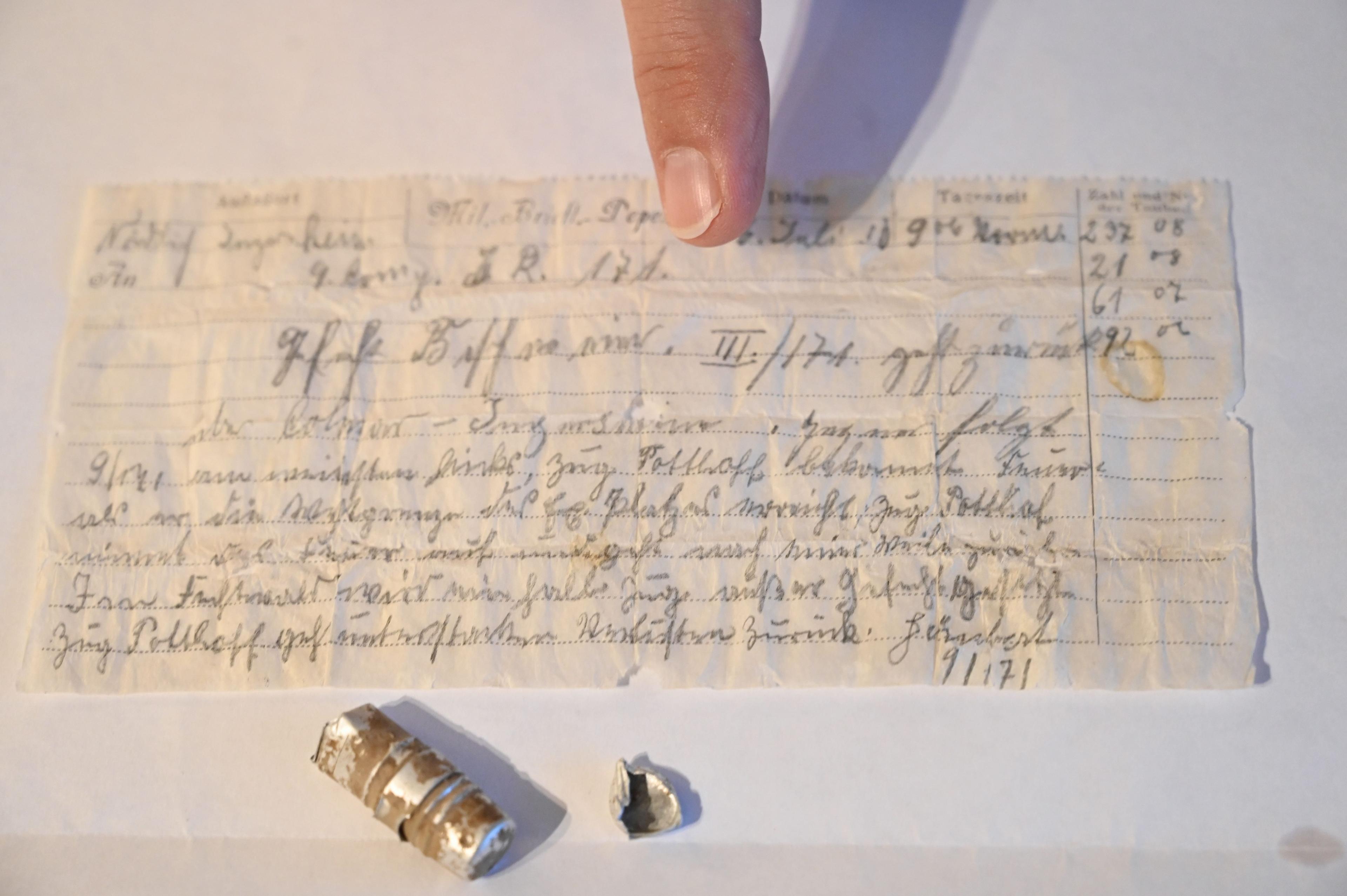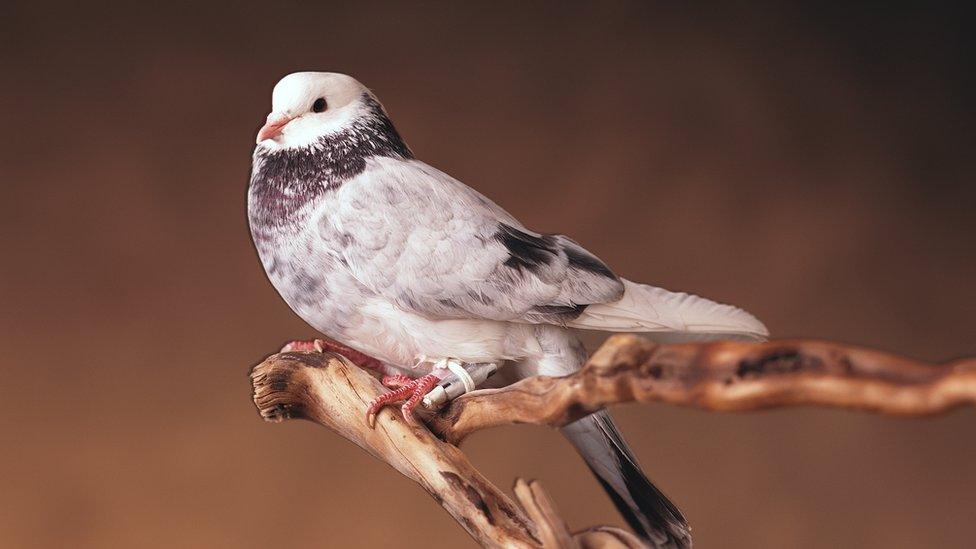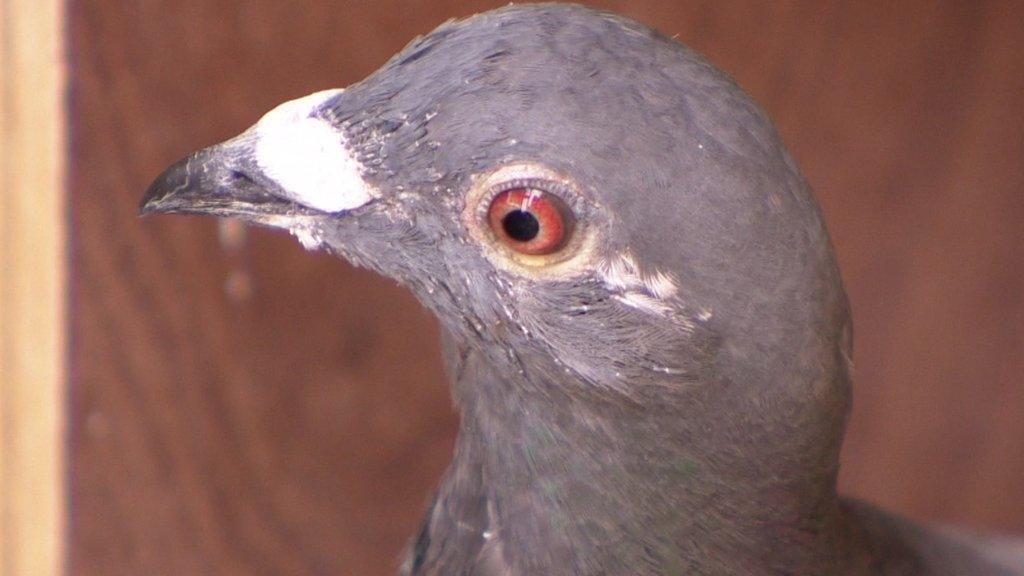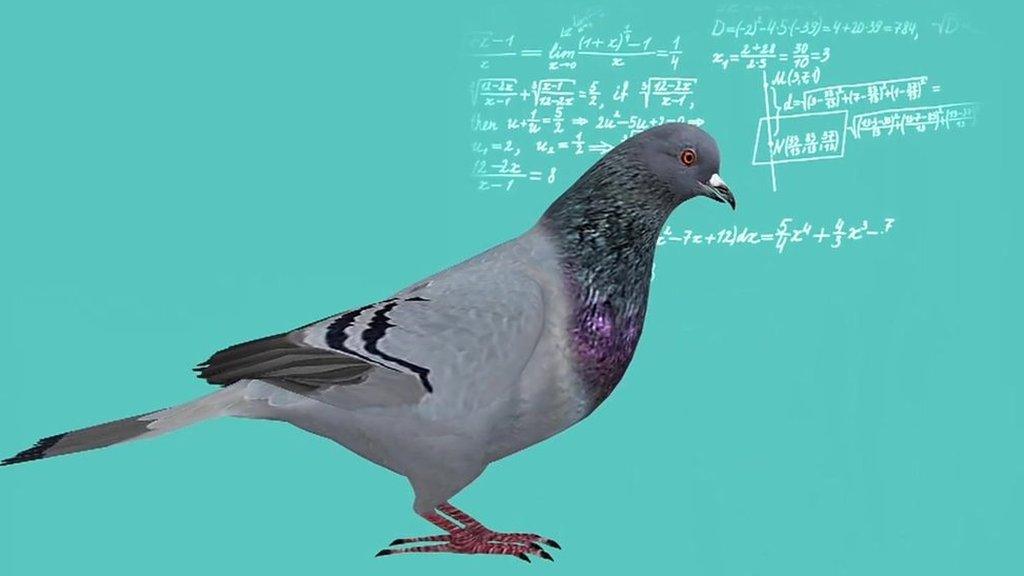World War One: 'Super rare' discovery of carrier pigeon message
- Published
- comments

The discovery has been described as "super rare"!
A 100-year-old message - believed to be from a carrier pigeon during World War One - has been found in France.
It was inside a tiny capsule which was discovered in a field by a couple in September while they were out for a walk in Ingersheim.
They then took it to the nearest museum - the Linge Museum.
Dominique Jardy is the curator there and she has described it as a "super rare" find.
The message was from a Prussian infantry solider based at Ingersheim - at the time it was part of Germany, but it is now in France.
The note was addressed to a superior officer and details military manoeuvres in the region. It would have been sent via carrier pigeon, but the bird never got to its destination.
Although the message was well preserved, it was hard to read. It also looks like it's dated 1910 or 1916.
World War One took place between 1914 and 1918.
The message was translated to read: "Platoon Potthof receives fire as they reach the western border of the parade ground, platoon Potthof takes up fire and retreats after a while. In Fechtwald half a platoon was disabled. Platoon Potthof retreats with heavy losses."
It will now go on display at the museum.
What is a carrier pigeon?

Homing Pigeons can only go back to one "mentally marked" point that they have identified as their home. So "pigeon mail" can only work if the sender has the receiver's pigeon!
It might be hard to imagine a world without the internet and mobile phones, but before they existed other methods had to be used to communicate.
Carrier pigeons - birds trained to carry messages attached to their leg or neck - were used a lot during World War One and Two to share top-secret and important messages. Their work even helped to save lives.
The birds risked being injured as they flew, but it was much easier and quicker for them to navigate their way through battlefields, than people. They were often the most reliable way of communicating.
Now, of course you can't just tell the pigeon an address you'd like it to deliver to!
But homing pigeons are very good at finding their way home.
They would be taken from their nest - or loft - to join soldiers on the frontline. They'd be looked after and kept in a cage until a message would need sending. Once the note was attached, that's when the bird would be released, and it would return home.
Homing pigeons have been known to find their way home from as many as 1,100 miles away, and they can travel an average of 50 miles per hour (mph) with bursts of up to 90 mph.
Now that's one way to save money on stamps!
- Published28 August 2018

- Published2 June 2018

- Published3 August 2014
